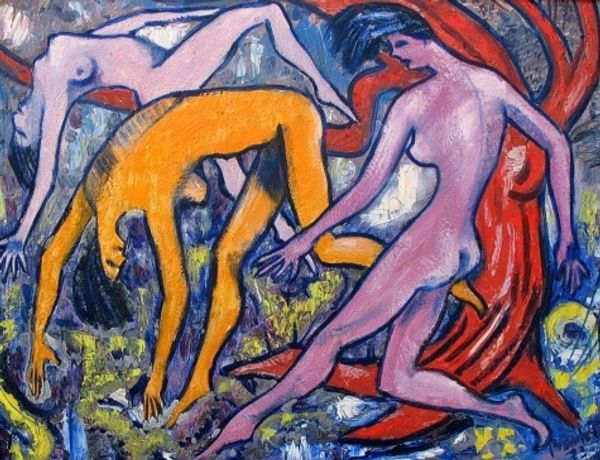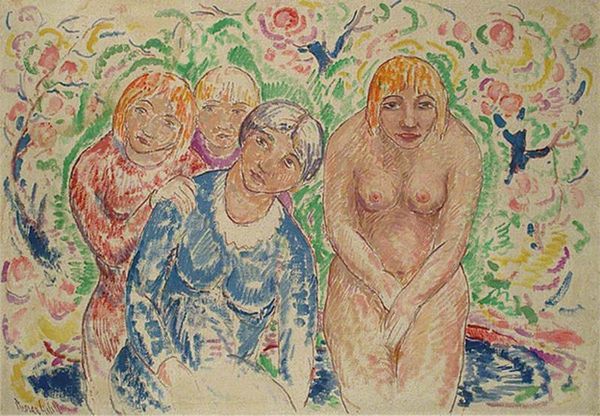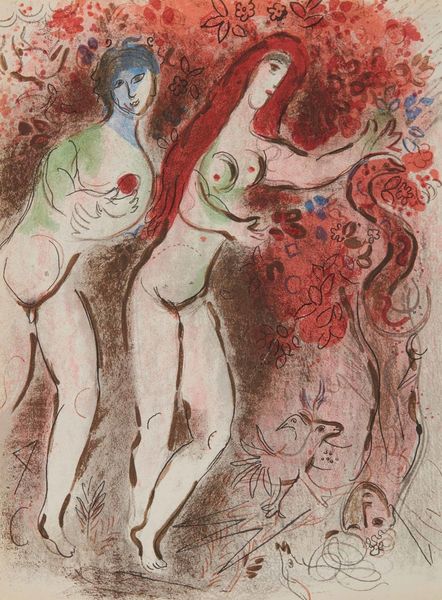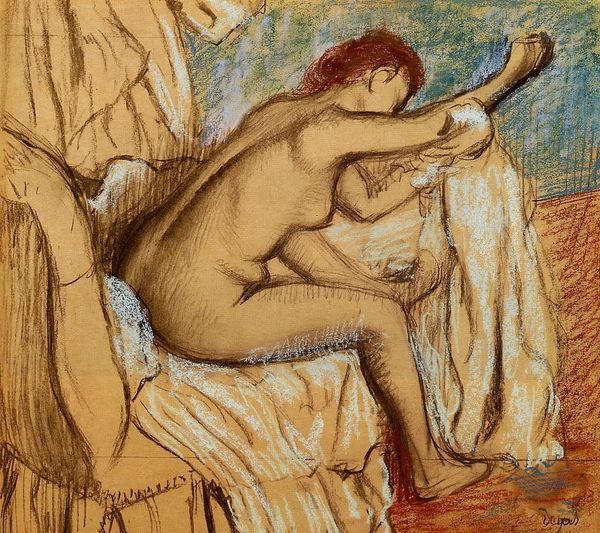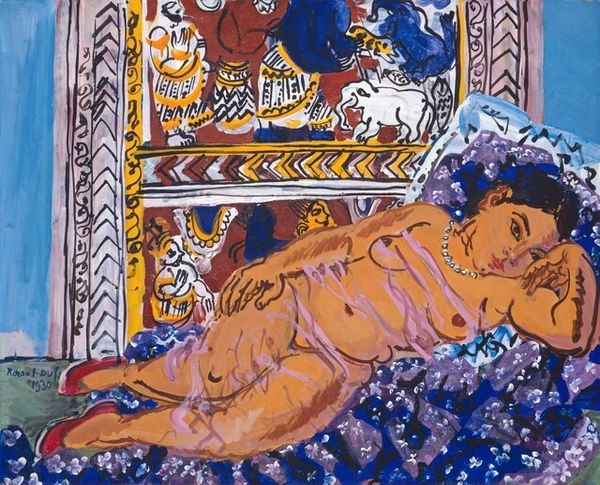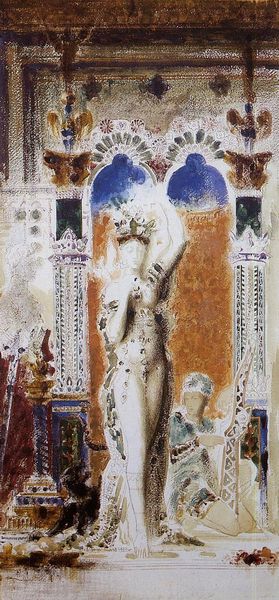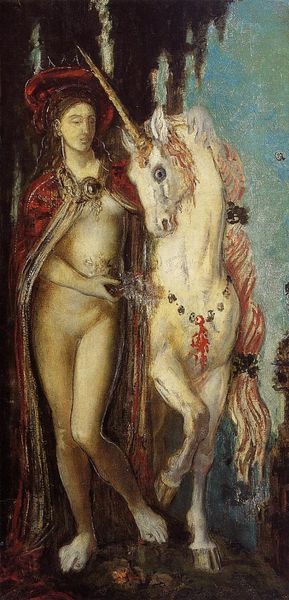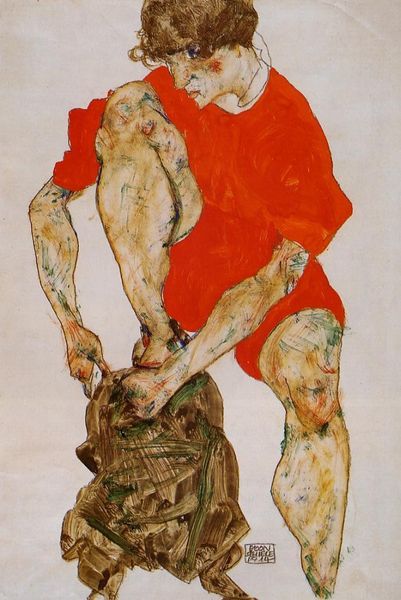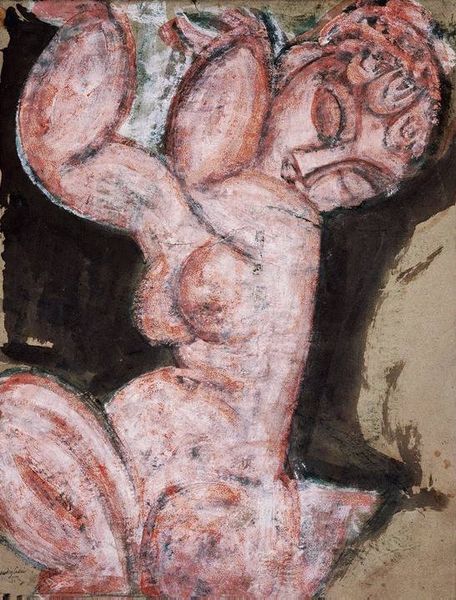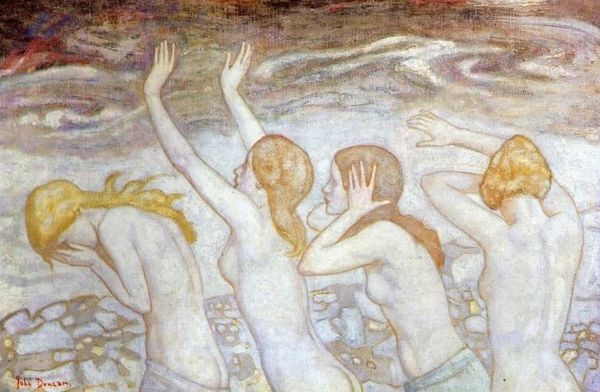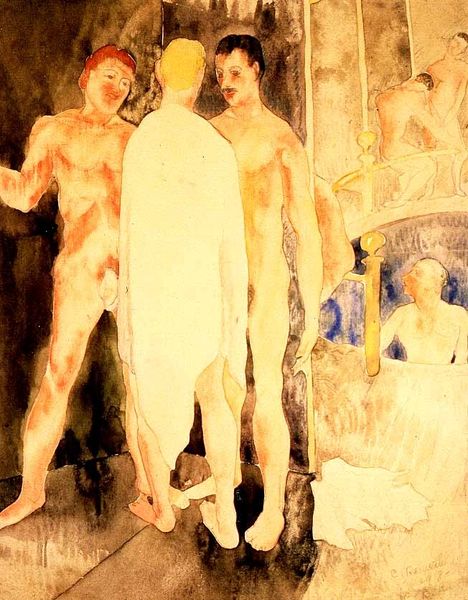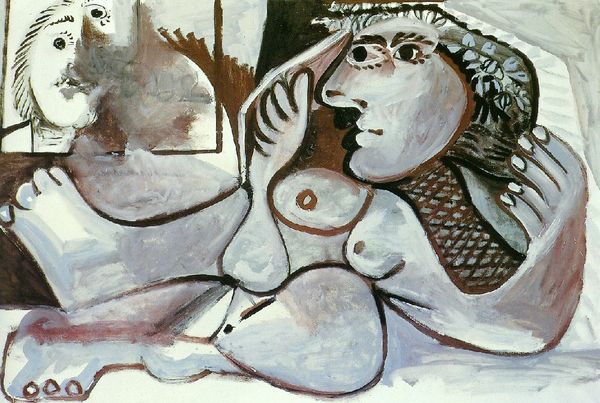
Copyright: Public domain
Curator: Looking at "Rose Nudes," an oil painting created in 1913 by Harry Phelan Gibb, I find myself immediately struck by its ambiguous blend of the human form and the landscape. It’s not quite clear if we're observing figures within a garden or if the figures *are* the garden. Editor: There is something about that deliberate ambiguity that really intrigues me too! The bodies seem to rise out of the landscape itself, colored in rosy hues that suggest both flesh and the blushing petals of roses. Curator: Indeed, Gibb painted this during a particularly fascinating time, historically, when artists were increasingly questioning traditional representations of the figure. Consider the backdrop of burgeoning avant-garde movements, like Fauvism, which undoubtedly influenced the raw application of color and rejection of naturalism present here. Gibb and other artists sought to deconstruct conventional visual language. Editor: Absolutely. The title, "Rose Nudes," speaks volumes, hinting at the archetypal symbol of the rose and its connotations with beauty, love, and, indeed, female sexuality. Gibb collapses those established notions onto the female form, creating a visual metaphor for natural abundance. Notice how the loose brushwork almost dissolves the figures, echoing the Ephemeral nature of beauty. Curator: Moreover, it challenges the established artistic traditions of depicting the female nude, commonly positioned for the male gaze within societal structures of the time. Gibb seems to reclaim the female form as part of the broader natural world. It reflects a growing interest among certain artists in female agency, even if it doesn't fully realize that potential. Editor: Right. You can also find some similarity to "Three Graces" which, from antiquity to the Renaissance, typically signify beauty, charm, and joy in painting. But instead of idealizing these female figures, Gibb presents us with a rawer vision, maybe stripping away layers of societal artifice. There's almost an innocence captured in this expressionistic approach. Curator: The expressionistic influence contributes powerfully. This painting isn’t about precise anatomical correctness but conveying mood and emotion through color and form. Editor: I agree; it becomes more than the sum of its parts. What lingers with me most are the themes of metamorphosis and an undeniable yearning for an essential unity with nature. Curator: Ultimately, viewing the artwork through its history reveals how "Rose Nudes" marks a significant transition. Gibb’s experiment moves towards abstraction while keeping an allegorical presence. Editor: Looking at Gibb's "Rose Nudes" reminds me of the power of visual metaphor, how something deeply encoded, can evolve over time and reflect changing attitudes about body, nature and representation.
Comments
No comments
Be the first to comment and join the conversation on the ultimate creative platform.

